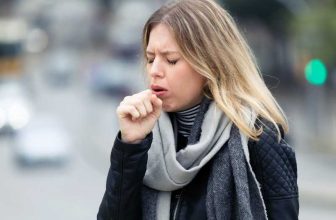
What is Carpopedal Spasm?
Introduction to Carpopedal Spasm
Carpopedal spasm is basically characterized by sudden involuntary skeletal muscle contractions and cramps, and sensory symptoms in the hands and feet. Often wrists and ankles are also involved.
Duration of involuntary Spasmic contractions
Spasmic contractions may be brief for a short period or may become life-threatening due to their constant underlying cause. (1)
Trousseau’s sign And cramps
Trousseau’s sign represents a carpopedal spasm that could be detected by expanding the blood-pressure cuff to a level slightly above systolic pressure for around 3-4 minutes. Further, it is used to differentiate the underlying causes of carpopedal spasm as this sign stands positive in hypocalcemia. (2)
Cramps are also a type of sudden involuntary muscle contractions, but they represent their occurrence anywhere in the body and are not restricted to hands and feet.
How to use Apple Cider Vinegar for muscle cramps?
Etiology
Research evidence has also declared a variety of causes involved in the etiology of carpopedal spasm, which are as follows
- Genetic predisposition
- Tetanus
- Metabolic Alkalosis
- Hypocalcemia
- Hypoglycemia
- Hypothyroidism
- Hyperventilation
- Hypokalaemia
- Hypomagnesaemia
- Anti-hypertensive and also medications
Common Etiology In Children
- Epilepsy
- Apnea
- Poor feeding
- Severe vomiting
- Prematurity
- low Apgar score
- Maternal diabetes
- Maternal hyperparathyroidism
Tetanus and Hypocalcemia
Tetanus and Hypocalcaemia are the two most common root causes in carpopedal spam development, but the triggers are different for each factor.
Several intrinsic factors may trigger hypoglycemia. Tetanus is triggered in response to an external factor when you got an external injury associated with soil contaminated with the bacterium clostridium tetani. When invading the body, this bacterium produces a toxin that subsequently results in abnormal involuntary muscle contractions, and you got Lock Jaw or Tetany. (3)
Sign And Symptoms
The rest of the symptoms are generalized and not correlated with a specific underlying cause, but only a few signs are associated with their originating cause.
Sensory:
- Pain
- Tingling
- Numbness
Motor:
- Muscle cramps
- Twitching of muscles
- Muscle weakness
- Jerky movements
- Muscle Fatigue
- Lethargy
- Abdominal distension
- Agitation
Carpopedal spasm in hand is usually considered as hyperflexion of the wrist, thumb, metacarpophalangeal joints, and then interphalangeal joints’ hypertension. Moreover, in feet the signs can be visualized as ankle and metatarsophalangeal joints hyper flexion and hyperextended toes. (4) (5)
Apple Cider Vinegar for fluid Retention in legs
Most Affected Population
Evidence-based studies have concluded that carpopedal spasm is more common among females than males. (6) (7)
Another research study has ascertained the common epidemiology of muscle cramps and spasms among children. (8)
Management
Therapeutic management of carpopedal spasm depends upon the underlying medical condition.
1. Medical Management
Conservative Treatment
- Calcium supplements will be recommended only in case if hypocalcemia is the root cause.
- Your healthcare practitioner will also prescribe you a tetanus toxoid vaccine (T.T Vaccine) in suspected tetanus infection (clostridium tetani bacteremia).
- Moreover, multivitamins your healthcare practitioner will recommend you Vit-d in conjugation with calcium supplement; to help replenish electrolyte imbalance.
- SPASMOLYTICS are indicated only in case of persistent severe carpopedal muscle spasm
- LOCALIZED MUSCLE RELAXANTS are indicated when spasmic contractions are persistent but mild to moderate in intensity.
- Further, NSAIDS Non- steroidal anti-inflammatory drugs are usually prescribed if the underlying cause is an infection or the consequence of an electrolyte imbalance.
Conservative Treatment
- TENOTOMY
Your healthcare practitioner will suggest Tenotomy ( surgical tendon release) only if the carpopedal spasm is of genetic origin and non-responsive to conservative treatment and physiotherapy. (9) (10) (11)
2. Physiotherapy
Physiotherapy will help to minimize your symptoms and also get you back to everyday healthy life. Carry on with the physical treatment options (physiotherapy) and other therapeutic options to get better earlier with pace.
1. Thermotherapy
Apply a heating pad or hydro collator hot pack on to the hands and then to feet for 15-20 minutes to promote muscle relaxation and pain-relieving effect.
2. Therapeutic Ultrasound
Your physiotherapist will decide the type, intensity, and duration of ultrasonic modality so based on the type of spasmic contractions.
When Is My Son Saturn Return?
3. Stretching Exercises
Sustained stretching exercise is the key to relax muscles and reduce pain due to cramps in carpopedal spasm. Whereas, to perform ten repetitions per minute for up to 15-20 min is a general recommendation.
4. Soft Tissue Massage
Soft tissue massage is an effective physical technique that so helps reducing muscle spasm and soreness caused by it.
5. Friction Massage
It is an effective treatment option to get quick relief from sudden involuntary spasmic muscle contractions. Similarly, just do a back and forth friction massage perpendicular to the fibers over the muscle-tendon will help reduce spasmic contractions.
6. Hydrotherapy
Hydrotherapy or aquatic treatment is one of the best treatment options for carpopedal spasm. Moreover, this therapy will reduce muscle spasms and improve muscular strengthening, stability, and blood flow to the soft tissues. Moreover, hydrotherapy has numerous long-term benefits. (12)
Conclusion
Carpopedal spasm is an involuntary muscle contraction in hands and feet, but the underlying cause may provoke the generalized muscle spasm. Besides, the clinical picture of carpopedal spasm is similar to that of other types of generalized muscle spasms. Still, to eradicate the root cause, you must undergo a healthcare practitioner’s complete screening process.
Approach a healthcare practitioner when you experience any relevant symptoms. Because delay may cause severe muscles cramping, generalized seizures may involve voluntary and involuntary muscles. Moreover, the heart may stop beating, and lungs may fail to ventilate.
Be cautious and follow all the precautionary measures because the underlying trigger may push you towards a life-threatening condition.
What is the Best Tasting Protein Powder For Women?
Research Articles And Related Links
- Tamrakar, Sharad & Pokharel, Anupam & Ojha, Saroj & Koirala, Naba Raj. (2001). Carpopedal Spasm: A Peculiar Presentation of Psychological Pain. Nepalese Journal of Psychiatry. 2. 66-68.
- Trousseau’s Sign.
- Carpopedal Spasms.
- Carpopedal Spasm.
- Thanvi,A.Naithaniyearetkekar,S.A.,Verma,D.Dindor,B.K.,(2016).Bilateral Carpal Spasm Under Spinal Anaesthesia During Abdominal Hysterectomy: A Case Report, 10(1), UD03-UD04.
- Singh R K (February 18, 2013) Carpopedal Spasm in an Elderly Woman. Cureus 5(2): e96.
- Schmidt, K., Powari, M., Shirazi, T., & Vaidya, B. (2007). Carpopedal spasm in an elderly man: an unusual presentation of coeliac disease. Journal of the Royal Society of Medicine, 100(11), 524–525.
- Oke, O. J., Amoo, K. O., Akinwumi, I. A., Fawale, O. O., Adeniyi, A. T., Adeniji, E. O., Adetola, H. H., Ologun, B. G., Folarin, O. F., & Kuti, D. K. (2019). Carpopedal spasm in a 4 year old boy with persisted vomiting and dyselectrolytemia in Wesley Guild Hospital Ilesa. The Pan African medical journal, 33, 43.
- Patel M, Hu EW. Trousseau Sign. [Updated 2020 Jul 18]. In: StatPearls [Internet]. Treasure Island (FL): StatPearls Publishing; 2020 Jan.
- Muscle Relaxers: A List of Prescription Medications.
- Parasa, M., Saheb, S. M., & Vemuri, N. N. (2014). Cramps and tingling: A diagnostic conundrum. Anesthesia, essays and researches, 8(2), 247–249.
- Spasm.






